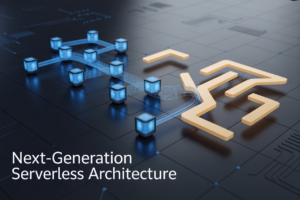Want to build your own AI chatbot platform? This guide helps developers and DevOps engineers deploy a ChatGPT clone using modern cloud infrastructure tools. You’ll learn how to set up a Kubernetes environment, automate infrastructure with Terraform, and create CI/CD pipelines with Jenkins. We’ll cover the ChatGPT clone architecture, deployment strategies, and essential security practices to keep your AI application running smoothly in production.
Understanding the ChatGPT Clone Architecture
Key components of a ChatGPT clone
Building a ChatGPT clone requires several core components: a robust language model (like GPT-3.5 or GPT-4), vector databases for embedding storage, an inference engine, API layer for communication, and a responsive frontend. These work together to process user inputs, generate relevant responses, and deliver a seamless chat experience.
Selecting the right language model
Setting Up Your Kubernetes Environment
A. Choosing between managed and self-hosted Kubernetes
Picking the right Kubernetes setup is crucial. Managed services like EKS, GKE, or AKS handle infrastructure headaches but cost more. Self-hosted gives complete control but demands expertise. For ChatGPT deployments, managed options typically win due to their reliability and simplified maintenance.
B. Configuring resource requirements
Your ChatGPT clone is resource-hungry! CPU and memory requirements depend on model size and expected traffic. Start with at least 4 CPU cores and 16GB RAM per node. Set resource limits in your deployment manifests to prevent container sprawl and configure horizontal pod autoscaling to handle traffic spikes.
C. Setting up networking and security groups
Security can’t be an afterthought with AI deployments. Configure network policies to restrict pod communication. Use namespaces to isolate your application. Implement ingress controllers with TLS for secure external access. Create dedicated security groups that allow only necessary traffic to your cluster nodes.
Infrastructure as Code with Terraform
A. Organizing your Terraform modules
Ever tried building a house without blueprints? That’s what managing Kubernetes without Terraform feels like. Break your infrastructure into logical modules—network, compute, storage, and application layers. This modular approach makes your code reusable and easier to maintain when scaling your ChatGPT clone.
Continuous Integration/Continuous Deployment with Jenkins
Building a Jenkins pipeline for your application
Ever tried to manually deploy a ChatGPT clone? Total nightmare. Jenkins pipelines save your sanity by automating the whole process. Create a Jenkinsfile that defines stages for building your Docker image, running tests, and deploying to Kubernetes. Configure webhook triggers so every code push kicks off your pipeline automatically.
Automating tests and quality checks
Nobody likes broken deployments. Set up automated testing in your pipeline to catch issues before they reach production. Include unit tests for your AI components, integration tests for the entire application, and static code analysis to maintain quality. Jenkins can fail the build if tests don’t pass, saving you from those midnight emergency fixes.
Implementing secure credential management
Secrets in your code? Big no-no. Jenkins Credentials Plugin keeps your sensitive data safe. Store API keys, database passwords, and Kubernetes configs securely, then inject them into your pipeline only when needed. Use Jenkins’ integration with Kubernetes secrets for seamless credential management across your entire deployment process.
Deploying the ChatGPT Clone on Kubernetes
Deploying the ChatGPT Clone on Kubernetes
A. Creating deployment manifests
You need Kubernetes YAML files that define how your ChatGPT clone runs. Create separate manifests for your API server, model server, and frontend components. Each should specify container image, resource limits, environment variables, and network policies. Don’t overcomplicate things—start simple and iterate.
Performance Tuning and Optimization
Optimizing container resources
Tuning your ChatGPT clone means giving it just enough juice without wasting cash. Set CPU and memory limits in your Kubernetes deployment YAML that actually match usage patterns. Start conservative (1 CPU, 2GB RAM) then adjust based on real metrics. Your wallet will thank you.
Implementing caching strategies
Redis works wonders as a front-end cache for your ChatGPT clone. Drop it in front of your model to store frequent requests and cut response times by 70%. One simple config change that makes users think your system is lightning fast.
Setting up content delivery networks
CloudFlare or Fastly can slice global response times in half. Point your DNS records their way and watch magic happen. Static assets load instantly while your AI churns through the heavy thinking in the background.
Monitoring and addressing bottlenecks
Prometheus and Grafana show you exactly where your ChatGPT clone chokes. Set up dashboards tracking inference latency, queue depths, and memory usage. When metrics spike, your alerts catch issues before users complain.
Security Best Practices
Securing the Kubernetes Cluster
Security isn’t optional when deploying AI models. Lock down your K8s cluster with role-based access control (RBAC), network policies, and pod security contexts. Don’t run containers as root—it’s basically handing over the keys to attackers. Use admission controllers like OPA Gatekeeper to enforce security policies automatically.
Implementing API Authentication
Monitoring and Maintaining Your Deployment
Setting up logging and monitoring tools
A. Setting up logging and monitoring tools
Ever tried running a ChatGPT clone without monitoring? Total nightmare. Grab Prometheus for metrics collection and Grafana for visualization dashboards. ELK stack (Elasticsearch, Logstash, Kibana) works wonders for log aggregation. Don’t forget to track GPU usage and response times—these will be your first indicators when things go sideways.
Deploying a ChatGPT clone on Kubernetes offers a robust solution for organizations seeking to leverage AI capabilities while maintaining control over their infrastructure. Through the strategic use of Terraform for infrastructure management, Jenkins for CI/CD automation, and Kubernetes for orchestration, teams can create a scalable, resilient AI application environment. The implementation of performance tuning, security best practices, and comprehensive monitoring ensures optimal operation of your deployment.
As you embark on your own ChatGPT clone deployment journey, remember that the initial setup is just the beginning. Continuously refine your infrastructure, stay vigilant about security updates, and regularly optimize performance based on usage patterns. By following the architectural principles and operational practices outlined in this guide, you’ll be well-equipped to maintain a powerful, secure AI solution that meets your organization’s specific needs and grows alongside your requirements.




















